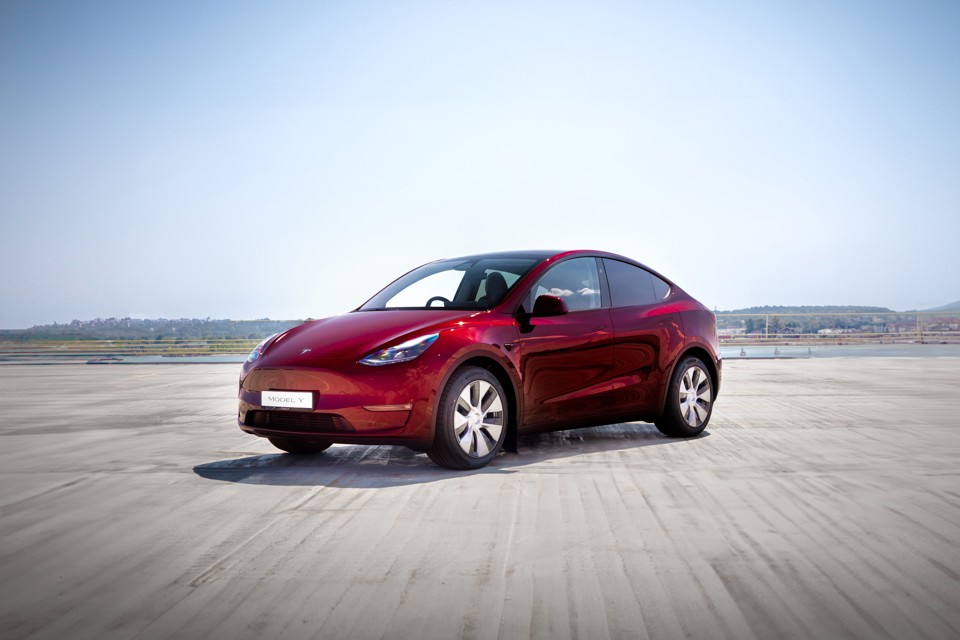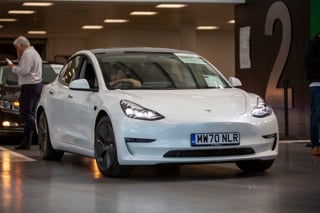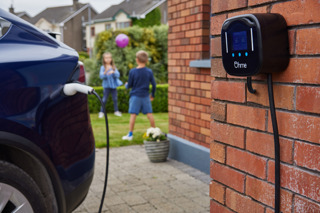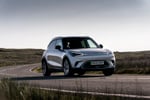The UK leads among major car markets and holds the top spot for EV adoption among large countries in Europe, ahead of Germany, according to research provider BloombergNEF.
BloombergNEF’s annual Electric Vehicle Outlook (EVO) expects nearly 22 million battery electric and plug-in hybrid vehicle sales this year, up 25% from 2024, as the cost of lithium-ion batteries falls and production of more affordable EV models ramp up.
Despite the global growth of EV sales, BNEF has reduced its long-term and short-term passenger EV adoption outlook for the first time largely due to the various policy changes in the US.
China accounts for nearly two thirds of those sales, followed by Europe at 17% and the US at 7%.
Further, plug-in electric vehicles are set to account for one in four vehicles sold globally this year, a remarkable growth from just a few years ago when less than 5% of global vehicle sales were electric vehicles.
The roll-back of federal fuel-economy standards, the phase-out of the EV tax credit and the potential removal of California’s ability to set its own air quality standards, result in a notable decline in EV adoption in the US, impacting global adoption rates.
Shifts in global adoption could lead to global EV volume overcapacity

Drawing on BNEF's team of sectoral and regional experts globally, the report presents two updated road transport scenarios.
In the base case Economic Transition Scenario (ETS) – in which EV adoption is shaped by current techno-economic trends and with no new policy intervention – EVs reach 56% of global passenger vehicle sales by 2035 and 70% by 2040, down from 73% in the previous outlook.
Despite rapid EV adoption, only 40% of the global passenger-vehicle fleet is electric by 2040 in the ETS, far below what is required to keep road transport emissions on track for the Net Zero Scenario.
Colin McKerracher, head of clean transport and energy storage at BloombergNEF, and lead author of the report said: “2024 was a landmark year for electrified transport, with electric vehicles hitting global sales highs and rapidly increasing adoption from emerging markets across Asia and LatAm.
Despite these positive tailwinds, we see slower EV adoption in the short and long-term due in large part to the changing landscape in the US.
“This shift in global adoption will also have major impacts on the battery industry, leading to overcapacity in manufacturing.”
US EV adoption rates driving battery demand down 8%

The report finds that while battery demand for EVs is still growing, it is lower than in previous outlooks.
BNEF’s battery demand outlook between 2025 and 2035 fell 8% compared to last year’s, equating to 3.4 terawatt-hours fewer batteries – a majority of which (2.8TWh) can be attributed to decreasing passenger EV sales in the US.
This dynamic is leading to continued overcapacity, driving battery costs lower and intensifying market competition.
In China, average utilization of battery plants is now below 50%. Despite a near-term slowdown, the long-term growth for battery metals remains strong as EVs are adopted more quickly across all segments.
The cost of public EV charging also poses a challenge to widespread EV adoption.
While the majority of EV drivers today are heavily reliant on home charging, which is typically 25% to 60% cheaper than gasoline on a per-kilometer-driven basis, public EV charging costs remain high.
Public fast charging prices have risen sharply since 2022, especially in the US and Europe, pushing costs per kilometer above gasoline in some cases.
As a result, refueling costs are expected to have a growing impact on EV adoption and price parity between EVs and ICE vehicles past the point of sale over time.
“Despite significant leaps in EV adoption globally, stable and comprehensive policy still matters in advancing it further,” said Aleksandra O’Donovan, head of electric vehicles at BNEF.
“Automakers that lose sight of the longer-term trend towards electrification – supported by falling battery prices and improving economics of EVs – risk being squeezed out of the major car markets.”
Key findings from the 2025 Electric Vehicle Outlook include:
- Range-extender EVs (e-REVs) are the fastest growing drivetrain, with sales rising 83% in 2024 to 1.2 million. These vehicles are a variant of plug-in hybrids but are used more like fully electrics, with average battery pack sizes of 38kWh, average electric-only range of 170km, and more than 70% of total distance driven in electric mode.
- EVs are now a meaningful source of electricity demand, with EVs in China alone now consuming more electricity than a country like Sweden. Electricity demand from passenger and commercial EVs, e-buses and electric two- and three-wheelers is expected to increase 2.4 times from 2025 to 2030.
- Solid-state batteries are now being commercialised and are expected to account for 10% of global EV and energy storage battery demand by 2035. These next-generation batteries offer advantages in safety and energy density and are expected to be deployed in high-performance, premium vehicles first. Manufacturers have announced over 830 gigawatt-hours of annual solid-state battery capacity, but only 9.5% of this has been commissioned, and most of this is semi-solid-state technology.
- As the share of EVs in the fleet accelerates, the impact on the oil market is becoming more significant, notably in markets like China and Europe. By the end of 2026, an incremental 1 million barrels per day of oil will be displaced globally compared to 2024. By 2030, road fuel consumption would have been 5.3 million barrels per day higher had every kilometer driven by EVs been driven with an ICE vehicle – more than double the amount avoided in 2024.
- The EV fleet is expected to surpass the size of the ICE fleet in many countries over the coming decades. Norway is projected to reach this milestone in 2030, followed by China in 2033, California in 2037 and Germany in 2039. This transition will boost revenue from public charging in Europe and North America, increasing from around $10 billion in 2025 to $220 billion in 2040.






















Login to comment
Comments
No comments have been made yet.